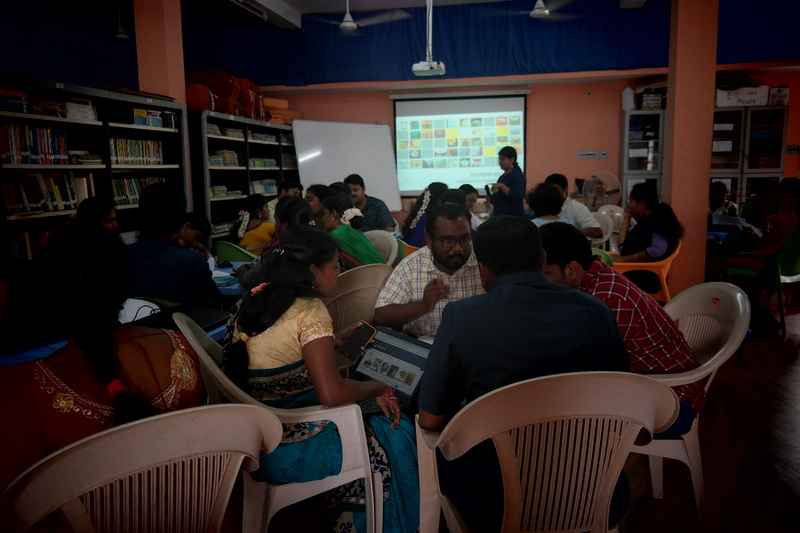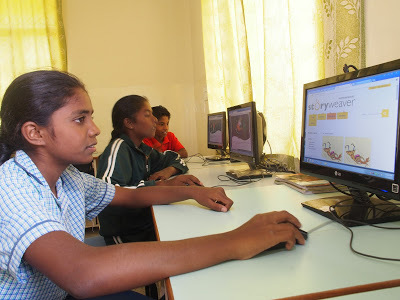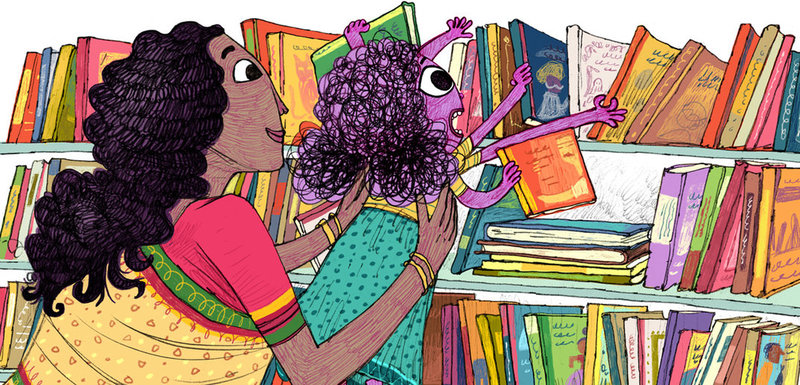A StoryWeaver workshop in your city!
Posted by Vineetha Menon on May 29, 2019With our mission of ‘a book in every child’s hand’, it is our constant endeavour to take more books and stories to more children. With StoryWeaver, our open-source, multilingual digital repository of children’s stories, access to good quality reading material has become much easier. Children and educators can read 14000+ stories in over 180 languages!

One of the ways in which we engage directly with organisations and educators is by conducting StoryWeaver workshops with them. The day-long session focuses on why reading is important and explores the platform in detail. Participants also get dedicated time to try the platform on their own and engage with the Pratham Books team and network with other participants. The workshops participation is free of cost, but on a first come first serve basis.
We are planning two workshops in June & July. One is Mangalore and the other one in Raipur. If you are an organisation that works with under-served children wanting to bring more stories to them and engage with StoryWeaver, please fill the form here and we’ll contact you with further details.
Interested organisations based in and around Mangalore, please sign up here. Interested organisations based in and around Raipur , please sign up here.
If you want to know more about our efforts to engage with organisations or have anything else to say, please write to us at [email protected].
Be the first to comment.Sign up for the StoryWeaver Delhi Workshop!
Posted by Remya Padmadas on May 13, 2016Pratham Books is conducting a workshop in Delhi to get educators and librarians familiar with StoryWeaver. The session will include a demo of the platform and also have dedicated work time for participants to try their hands on StoryWeaver.
If you are :
- a librarian looking to curate stories
- a teacher in search of interesting ways to introduce concepts to your students
- a Reading Champion
- someone passionate about children's storybooks in Indian languages
... please sign up!

Please note: Registration is compulsory and we have a few seats left, so hurry up and register here. Confirmed participants for the workshop will receive a confirmation email from us by 2.00 p.m Tuesday, 17th May. Preference will be given to participants working in underserved communities.
Workshop details
Date: 18th May, Wednesday
Time : 9.30 a.m to 2.00 p.m (lunch will be arranged)
Venue: Preet Vihar, Delhi. More details will be emailed to shortlisted participants
Registration link : http://goo.gl/forms/
Alert: Reading with StoryWeaver workshop in Hyderabad
Posted by Remya Padmadas on November 15, 2018Reading is one of the most essential components of a child's learning & development journey. At Pratham Books and StoryWeaver, we understand this and StoryWeaver came about with the exact purpose of increasing access to books for children in languages and context that they enjoy - in a boundary-less digital way.
StoryWeaver (http://www.
-
Browse, read and curate a reading list from over 9700 stories across 122 languages
-
Download stories for offline reading
-
Create a new story or a set of flashcards from an image bank of over 13000 illustrations
-
Re-level or remix a story to suit your child's needs
- Translate stories to a language of your choice
And best of all, ALL of this is absolutely FREE
We invite educators, librarians and resource people to attend the StoryWeaver workshop to be held in Hyderabad. To celebrate the diversity of languages we have, we are planning to conduct the workshop session in English on the 29th of November and in Telugu on the 30th of November. You are requested to give your preference for the date/language while signing up and we will confirm the final date and the venue of the workshop to you at a later stage. However, just in case we have lesser number of participants for the Telugu workshop, we will be looking at doing a bilingual one on 29th itself. Please do make a note of this.

(Image from 'A Book for Puchku' by Deepanjana Pal and Rajiv Eipe.)
The workshop would cover the following:-
1. A detailed Demo of StoryWeaver – how to navigate and use the platform
2. Examples of how educators are using StoryWeaver effectively in their classrooms
3. Dedicated work time for participants to try their hands on StoryWeaver
4. An opportunity to meet other educators and make interesting conversations
If this excites you, REGISTER HERE to book your place in the workshop, latest by 22nd November, Thursday.
Please note that the seats are limited and we might not be able to accommodate more than 2-3 people per organization. Confirmed participants will get a separate email confirming their participation and other logistical details.
The workshop will be held between 9.30 a.m to 4.30 p.m and there is no fee to attend the workshop.
Feel free to reach out with any questions to Khyati at [email protected]. Look forward to seeing you there!
Be the first to comment.